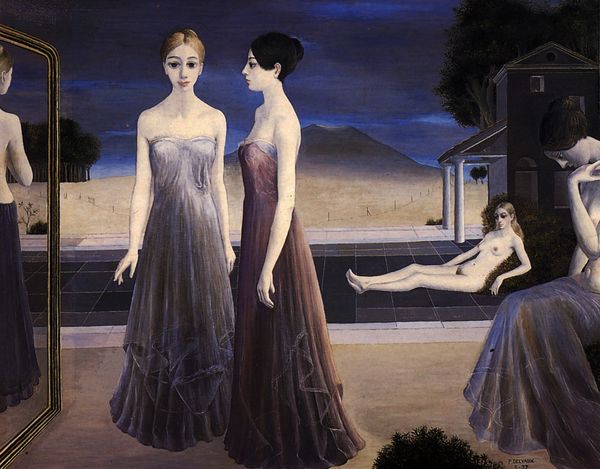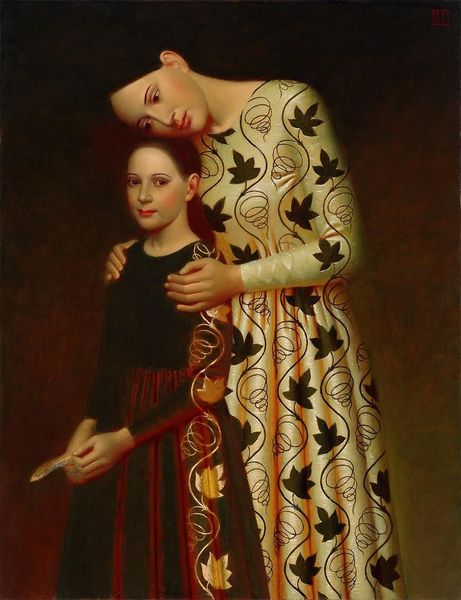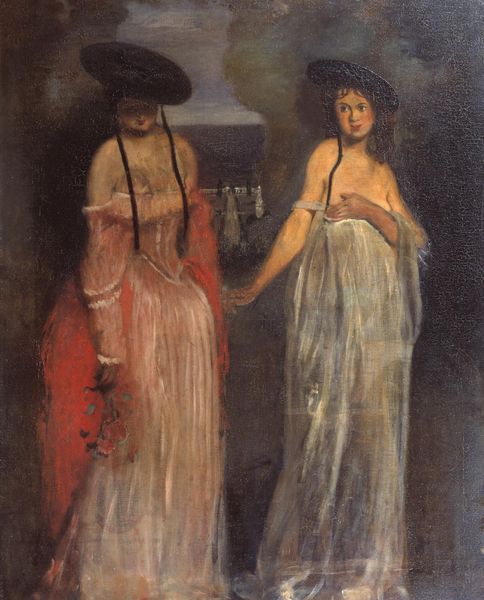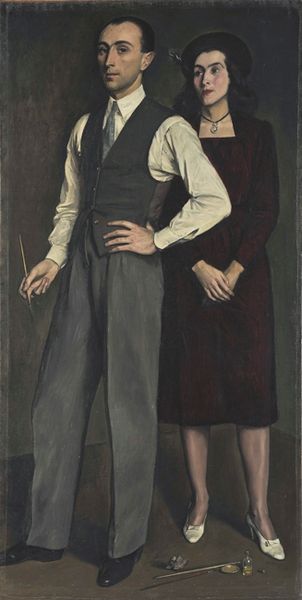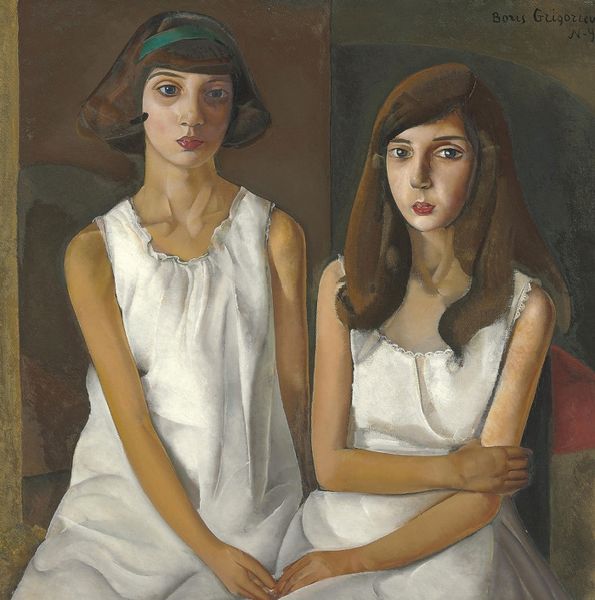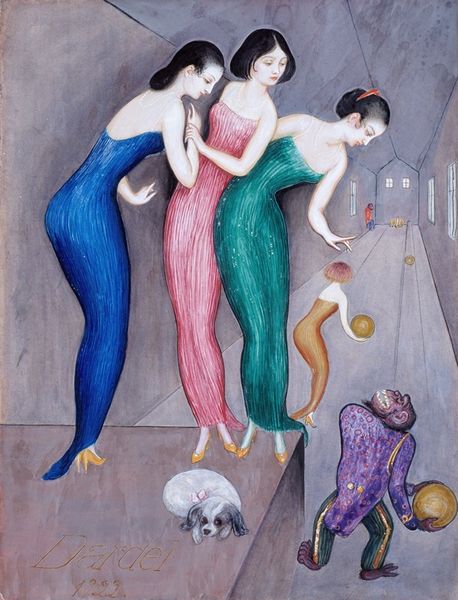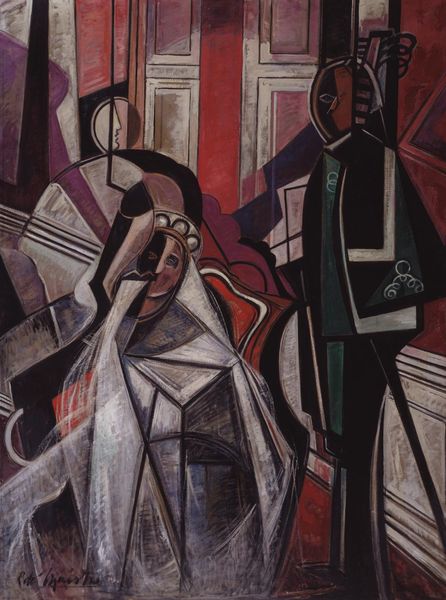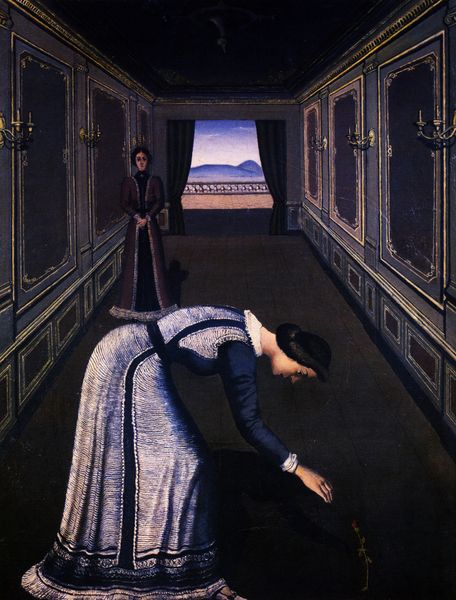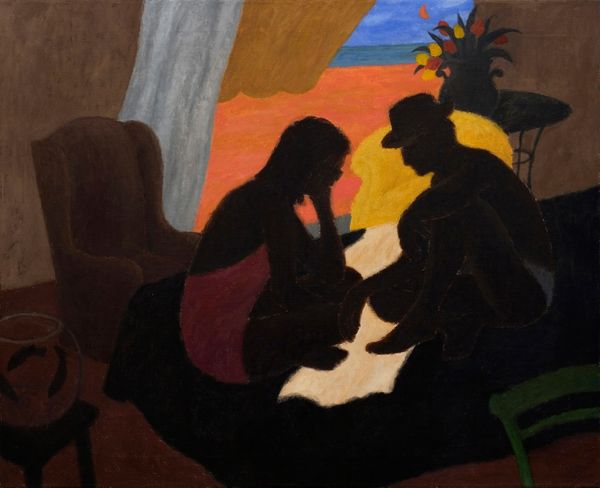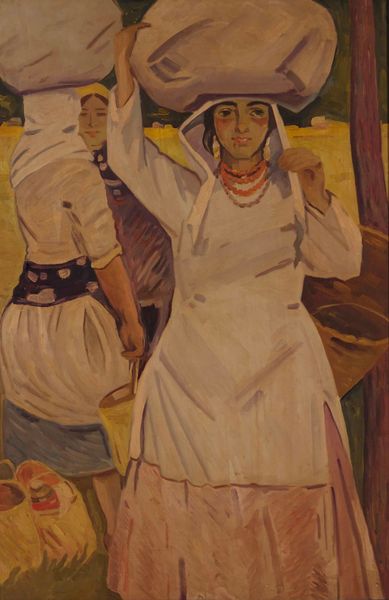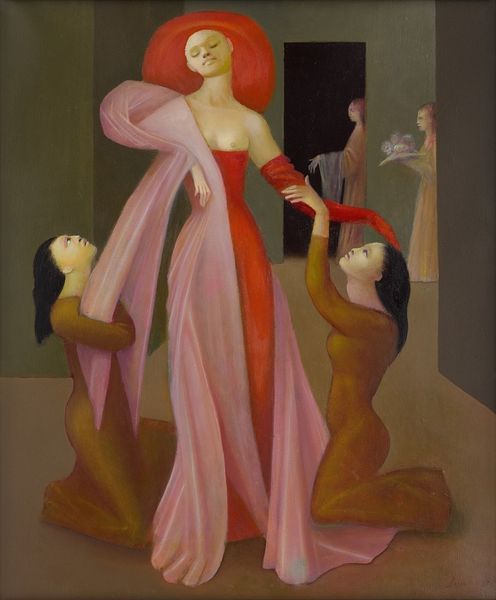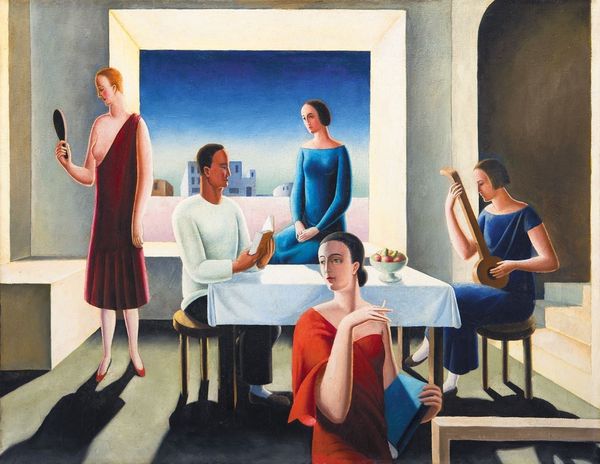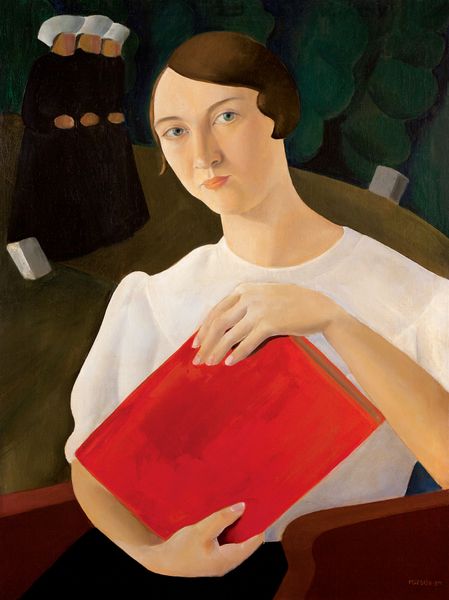
painting, oil-paint
#
portrait
#
painting
#
oil-paint
#
symbolism
#
genre-painting
#
academic-art
#
portrait art
Copyright: Public domain
Curator: Looking at this oil on canvas, Julio Romero de Torres invites us into a space of contrasts in his 1908 work, "Amor Sagrado, Amor Profano" which translates to "Sacred Love, Profane Love". Editor: It immediately strikes me with its stark tonal division. The juxtaposition of the dark figure against the softly illuminated one creates a really compelling visual tension. The hazy backdrop almost disappears, further amplifying that contrast. Curator: It's fascinating how Romero de Torres constructs these opposing figures within a highly symbolic and academic framework, channeling influences from symbolism but clearly intending a modern reading. The concept explores dualistic aspects of love and morality within the social contexts of early 20th-century Spain. Editor: Yes, visually, the formal oppositions do the most work here. The artist contrasts textures – from the flat darkness of the left figure's dress to the lustrous folds of the draped fabric on the right. The rose in between is almost secondary, like a subtle bridge. Curator: That rose might seem subtle, but it serves as a pivotal point. Romero de Torres uses it to engage with themes of beauty, innocence, and the transition between these opposing worlds that each figure embodies. Its presence reflects anxieties of modernity and reinterprets classical themes in a quickly changing society. Editor: And yet there's such serenity in each face! Regardless of shadow and light, Romero de Torres pays such meticulous attention to detail in his figuration; even the hands possess a delicate precision, but is this enough to counterbalance the obvious symbolism that may feel overstated to contemporary audiences? Curator: It’s important to remember, it was designed to communicate to the social sensitivities of its time. Seeing beyond immediate aesthetic preferences may illuminate this academic re-imagining of an established allegory. Editor: I concede the historicity, though, viewed solely on aesthetic qualities—I can't help but feel a disconnect given our contemporary sensitivities. Curator: That's what keeps it interesting, no? These dialogues across time help keep works and histories evolving.
Comments
No comments
Be the first to comment and join the conversation on the ultimate creative platform.
